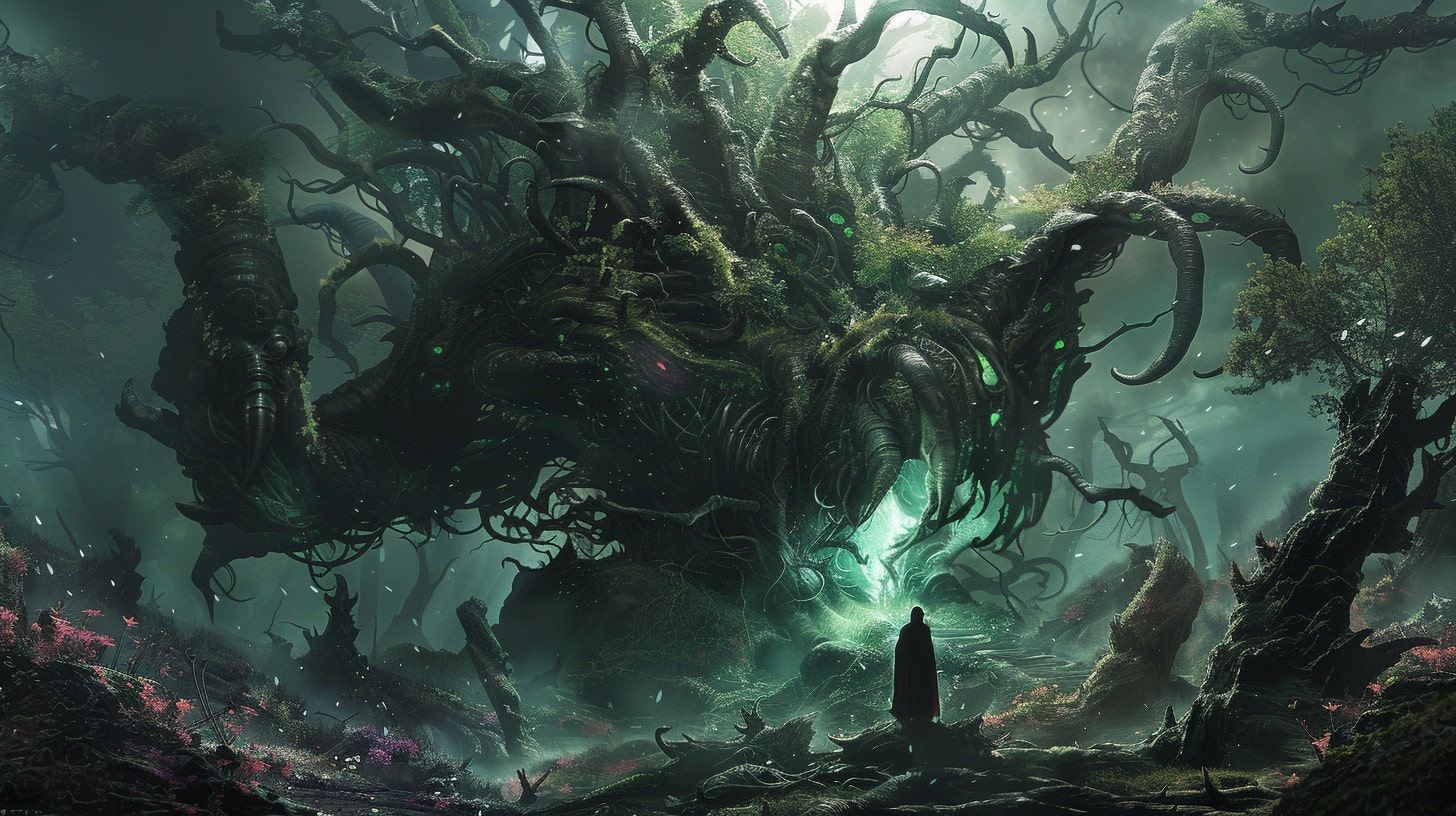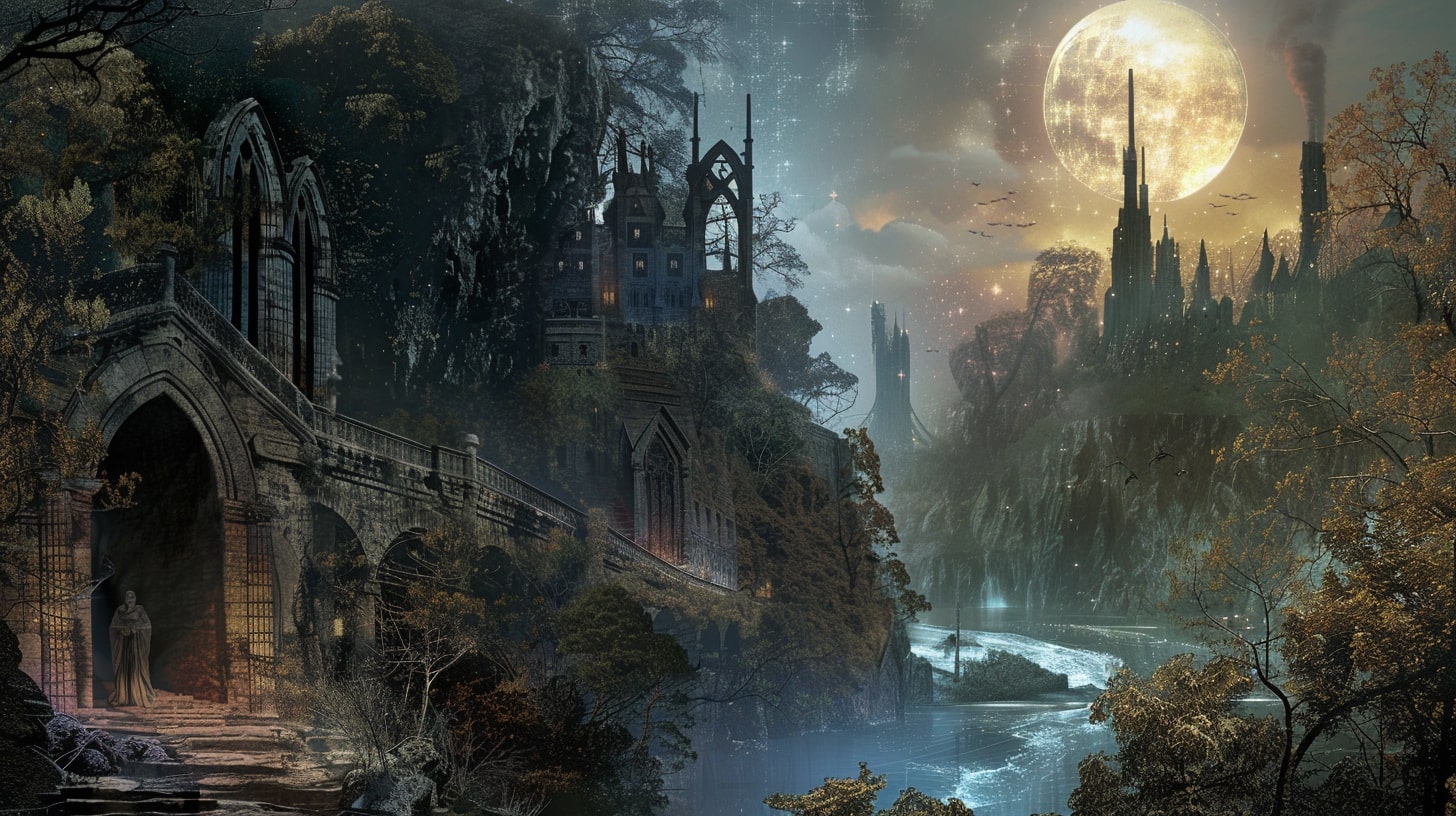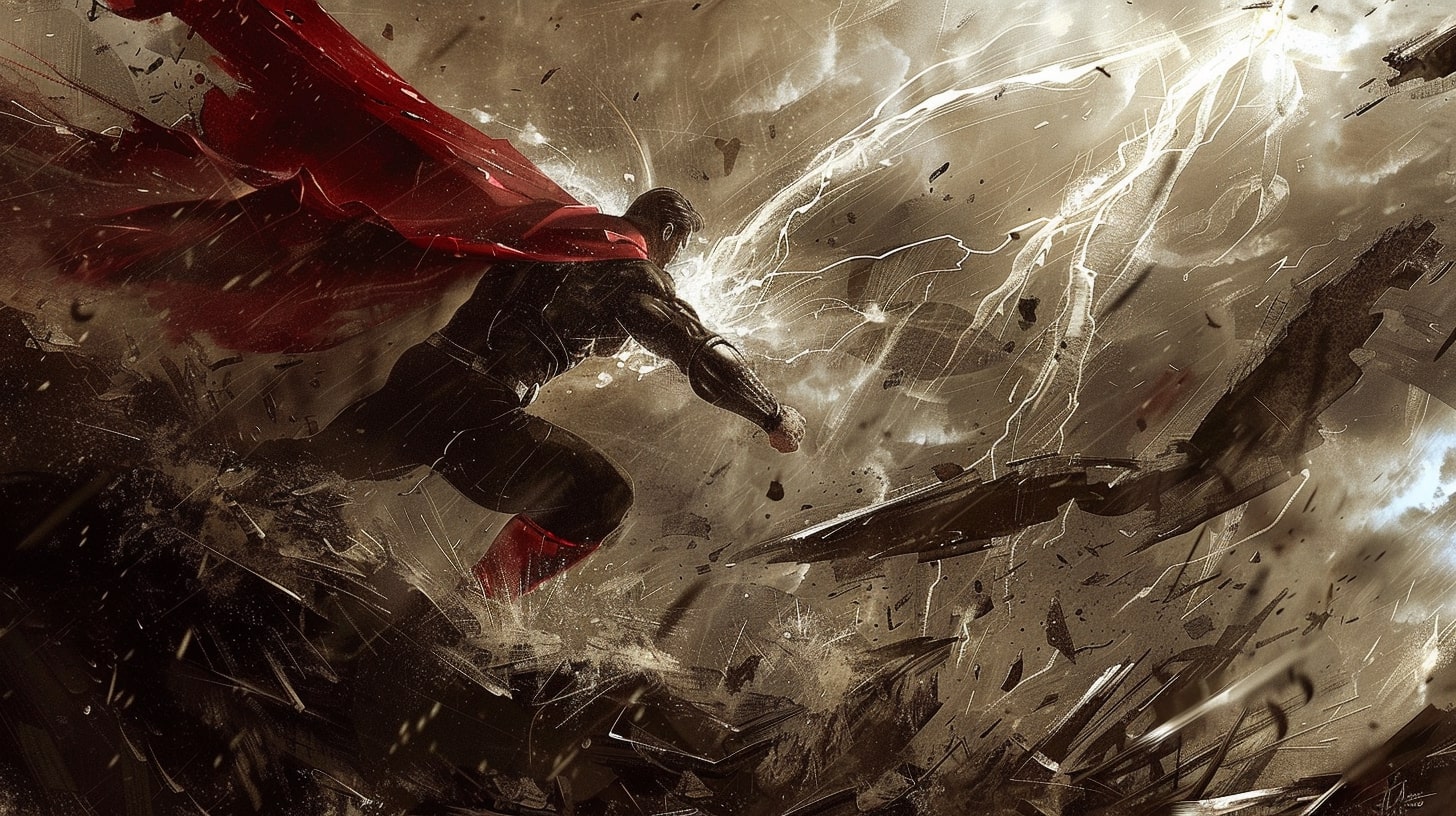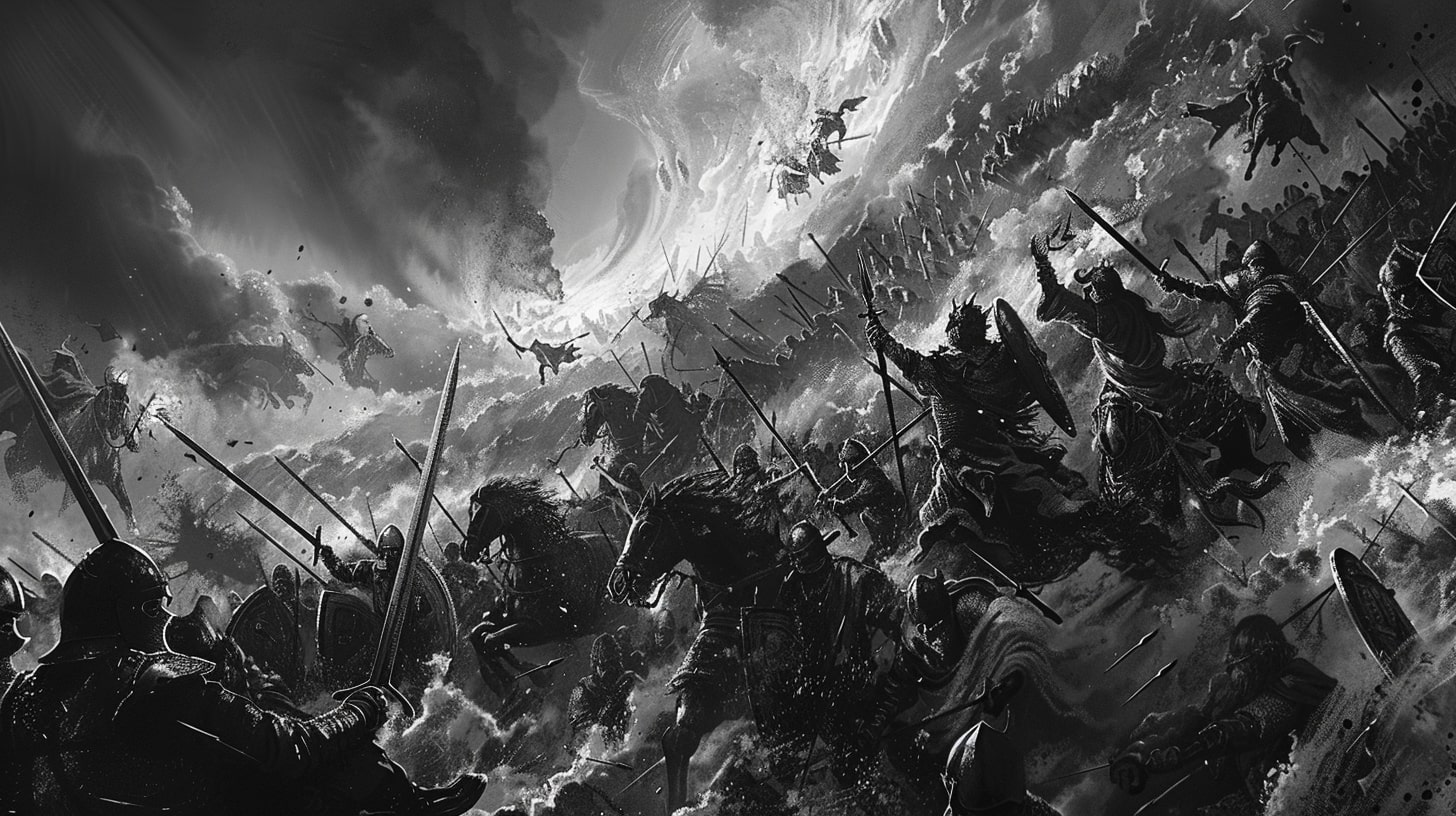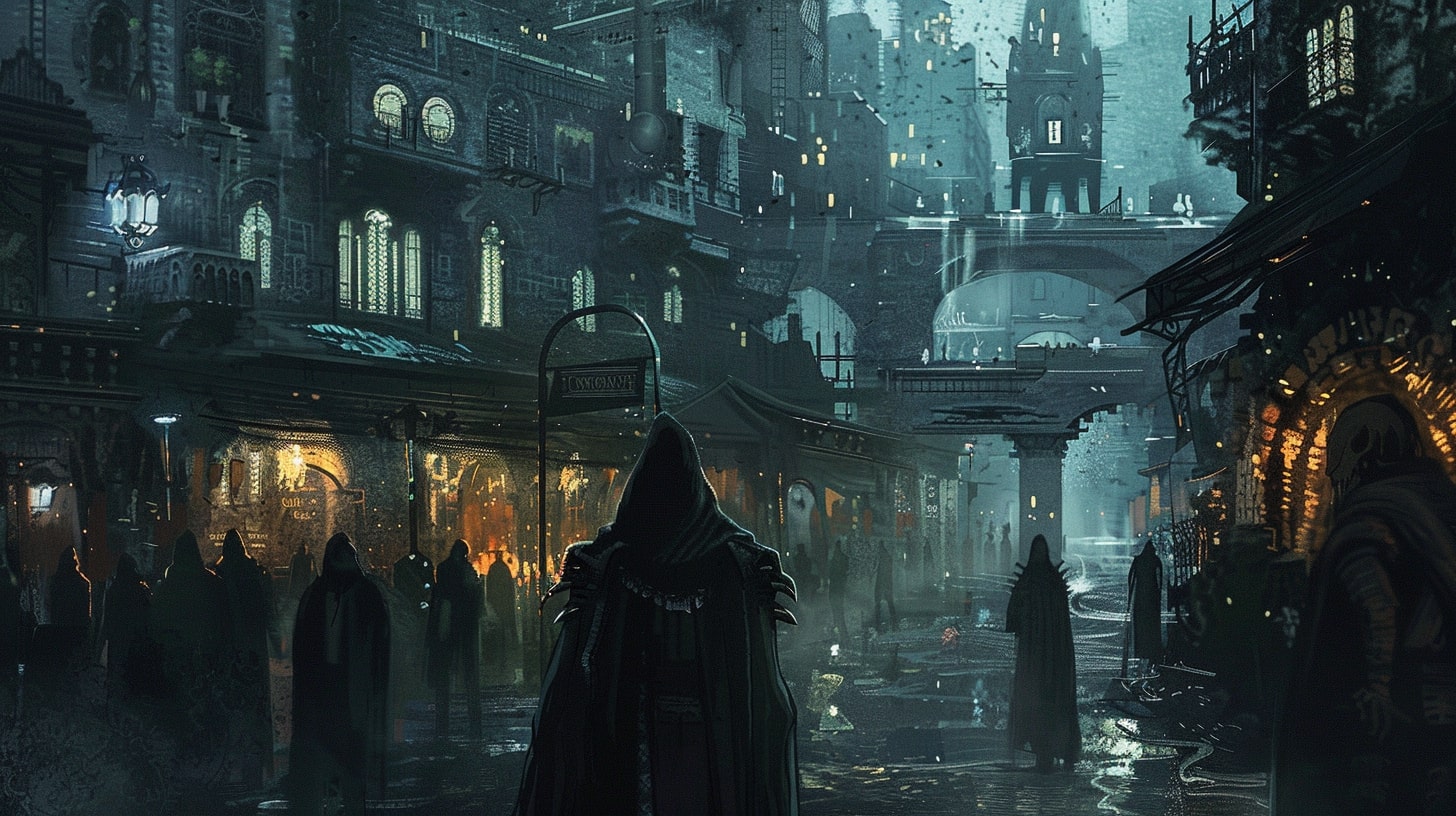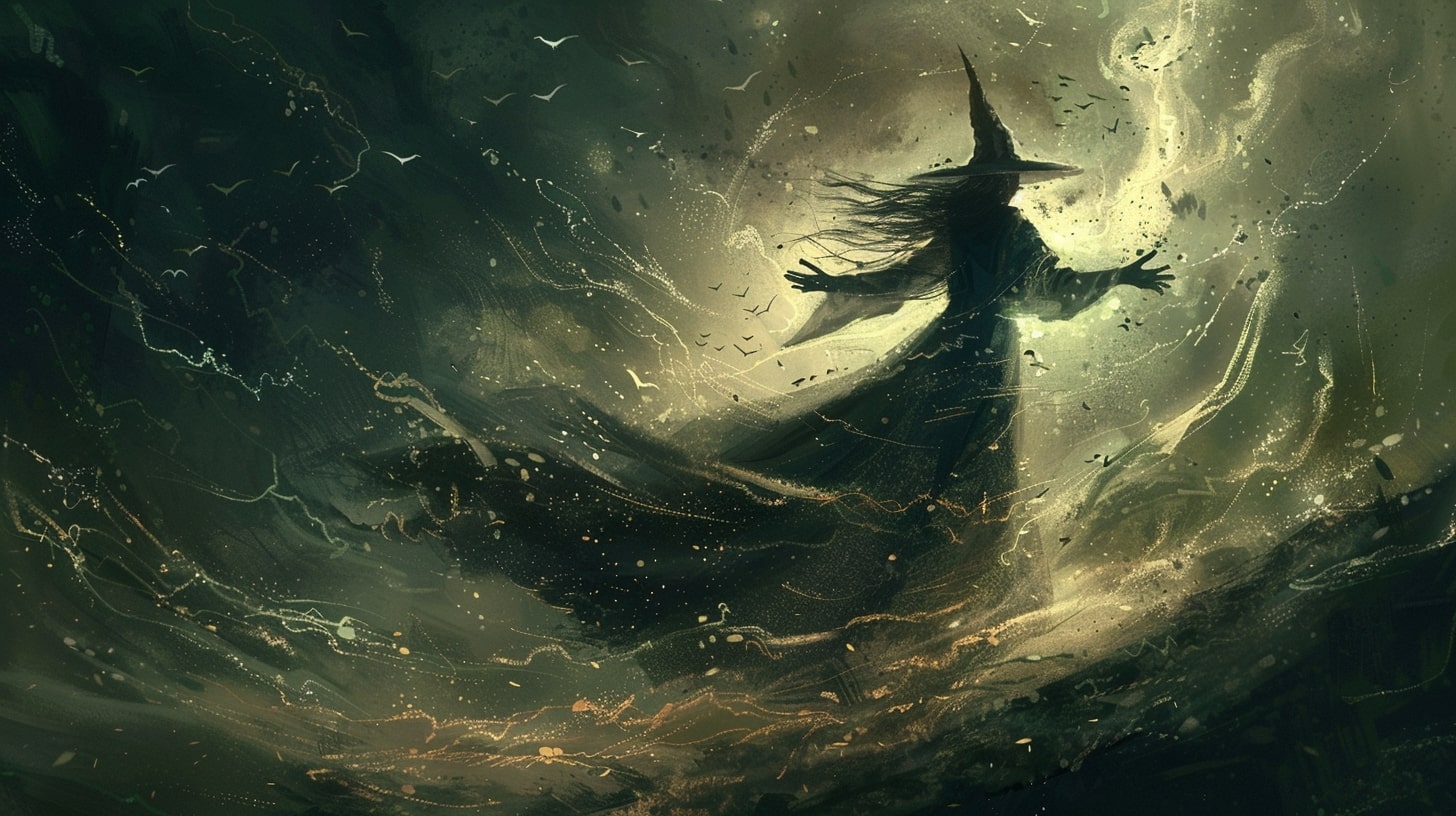Setting the Stage for Fantasy
Creating an engaging fantasy scene is the cornerstone of captivating your readers. Understanding the importance of these scenes and the essential elements that make them compelling will help you craft memorable moments in your fantasy stories.
The Importance of Engaging Scenes in Fantasy Writing
Engaging scenes are crucial in fantasy writing because they immerse your readers in the world you've created. These scenes help to:
- Draw Readers In: A well-written scene grabs the reader's attention and keeps them invested in the story.
- Build the World: Through vivid descriptions and detailed settings, you can create a believable fantasy world.
- Develop Characters: Engaging scenes allow your characters to grow and reveal their personalities.
- Showcase Magic: Fantasy often involves magical elements, and engaging scenes are the perfect place to showcase them.
- Advance the Plot: Every scene should move the story forward, building tension and excitement.
Elements of a Captivating Fantasy Scene
To create captivating fantasy scenes, focus on incorporating the following elements:
Vivid Descriptions
Paint a picture with your words. Use descriptive language to create vibrant images in your reader's mind. Consider the sights, sounds, and smells of your setting. For tips on creating vivid descriptions, check out our article on building a haunting world.
Unique Settings
Fantasy worlds are often unique and otherworldly. Develop settings that are distinct and imaginative. Whether it's an enchanted forest or a bustling magical city, make your settings stand out. For more on developing unique settings, visit building a fantasy world.
Dynamic Characters
Characters drive the story. Develop characters with depth and complexity. Show their motivations, fears, and desires through their actions and dialogue. Refer to our article on character development techniques for more insights.
Magic and Fantasy Elements
Magic is a hallmark of fantasy. Whether you use a soft magic system or a hard magic system, ensure that your magic is consistent and enhances the story. Explore different types of magic systems, such as symbolic magic system or music-based magic system.
Conflict and Tension
Conflict drives the plot forward. Create tension through obstacles and challenges that your characters must overcome. This keeps readers on the edge of their seats. For more on building tension, see how to write high fantasy.
Engaging the Senses
Use sensory details to immerse your readers. Describe not just what your characters see, but also what they hear, smell, and feel. This adds depth to your scenes and makes them more engaging.
| Element | Description |
|---|---|
| Vivid Descriptions | Use descriptive language to create vibrant images |
| Unique Settings | Develop distinct and imaginative settings |
| Dynamic Characters | Show characters' motivations, fears, and desires |
| Magic and Fantasy Elements | Ensure magic is consistent and enhances the story |
| Conflict and Tension | Create tension through obstacles and challenges |
| Engaging the Senses | Use sensory details to immerse your readers |
By focusing on these elements, you can create engaging fantasy scenes that captivate your readers and bring your fantasy world to life. Remember to always aim for clarity and impact in your writing, and seek feedback to refine your scenes further.
Building Immersive Worlds
Creating an immersive world is essential to writing engaging fantasy scenes. This section will guide you through crafting vivid descriptions and developing unique settings that captivate your readers.
Creating Vivid Descriptions
Vivid descriptions transport readers into your fantasy world. By painting a picture with words, you can make your scenes come alive.
Tips for Creating Vivid Descriptions:
- Use Sensory Details: Engage the reader’s senses by describing sights, sounds, smells, tastes, and textures. For example, instead of saying "The forest was dark," describe "The dense canopy of leaves blocked out the sun, casting eerie shadows on the forest floor."
- Show, Don’t Tell: Instead of telling the reader that a character is scared, show their actions and reactions. For example, "Her hands trembled and her breath quickened as she stepped into the shadowy alley."
- Use Metaphors and Similes: Compare unfamiliar elements to familiar ones to help readers visualize. For example, "The castle towers stood like silent sentinels against the night sky."
Example Table of Sensory Details:
| Sense | Example Description |
|---|---|
| Sight | "A sea of golden wheat swayed in the breeze." |
| Sound | "The distant howl of a wolf echoed." |
| Smell | "The air was thick with the scent of pine." |
| Taste | "The bitter taste of herbs lingered." |
| Touch | "The rough bark scratched his skin." |
For more information on creating evocative settings, see our article on building a fantasy world.
Developing Unique Settings
Unique settings are the backbone of any compelling fantasy story. They provide a backdrop that enhances the narrative and adds depth to the plot.
Steps to Develop Unique Settings:
- Start with a Concept: Define the core idea for your setting. Is it a mystical forest, a bustling medieval city, or a floating island?
- Integrate Magic: Decide how magic influences the environment. Does it shape the landscape, affect weather patterns, or create fantastical creatures? Explore different magic systems like the soft magic system or hard magic system.
- Create a History: Develop the history of your setting. Consider past events, legendary figures, and ancient civilizations. This adds layers and makes the world feel lived-in.
- Consider Culture and Society: Think about the societal norms, traditions, and daily life. What do people eat, how do they dress, and what are their beliefs? Check out our article on worldbuilding societies for more insights.
- Add Unique Landmarks: Create distinctive landmarks that are memorable and significant to the story. This could be a towering mountain, an ancient ruin, or a mystical lake.
Example Table of Setting Elements:
| Element | Example |
|---|---|
| Core Idea | "Enchanted forest with sentient trees." |
| Magic Influence | "Trees can move and communicate telepathically." |
| Historical Event | "A great battle between wizards took place here." |
| Cultural Aspect | "Inhabitants worship the forest spirits." |
| Unique Landmark | "The Whispering Oak, a tree that tells fortunes." |
By focusing on these elements, you can create settings that draw readers into your fantasy world. For more on developing settings, see our article on building a haunting world.
Crafting Dynamic Characters
Creating dynamic characters is essential in bringing your fantasy scenes to life. Characters are the heart of your story, and their development and interactions significantly influence how engaging your scenes are.
Character Development in Fantasy Scenes
Character development involves more than just creating a background for your characters. It’s about showing their growth and change throughout the story. In fantasy writing, characters often undergo significant transformations as they navigate magical realms and face extraordinary challenges.
- Backstory: Give your characters a rich backstory. This doesn't have to be revealed all at once but can be woven into the narrative as the story progresses.
- Goals and Motivations: Clearly define what your characters want and why. This drives their actions and decisions.
- Flaws and Strengths: Perfect characters can be boring. Give them flaws that make them relatable and strengths that help them overcome obstacles.
- Character Arcs: Develop arcs that show how characters evolve due to the events in the story. This makes them more dynamic and engaging.
For more tips on character development, check out our article on character development techniques.
Dialogue and Interactions
Dialogue is a powerful tool in fantasy writing. It reveals character traits, advances the plot, and helps build the world. Effective dialogue should sound natural and be true to each character’s voice.
- Voice and Tone: Each character should have a distinct voice. This can be achieved through word choice, sentence structure, and speech patterns.
- Purposeful Conversations: Every piece of dialogue should serve a purpose, whether it’s revealing character, advancing the plot, or building tension.
- Subtext: Sometimes what is not said is more important than what is. Use subtext to add depth to interactions.
In addition to dialogue, character interactions are crucial. These interactions can include physical actions, body language, and emotional responses.
| Aspect | Description |
|---|---|
| Voice and Tone | Distinct for each character, reflecting their background and personality |
| Purposeful Conversations | Dialogue that reveals character traits, advances the plot, or builds tension |
| Subtext | Implied meaning beneath the spoken words |
For example, if two characters are discussing a plan to defeat a villain, their dialogue can reveal their bravery, fears, and level of trust in each other. Actions like a reassuring pat on the back or a nervous glance can add layers to the interaction.
Explore our article on writing compelling romance for insights on creating believable and engaging character relationships.
By focusing on character development and crafting authentic dialogue and interactions, you’ll create engaging fantasy scenes that captivate readers. Remember to keep your characters dynamic and their conversations purposeful, making every scene a vital piece of your story.
Weaving Magic and Conflict
Incorporating Magic and Fantasy Elements
In fantasy writing, magic and fantastical elements are essential for creating a unique and immersive world. Integrating these elements seamlessly into your narrative is key to engaging your readers.
Define Your Magic System: Whether you choose a soft magic system or a hard magic system, clarity is crucial. Outline the rules, limitations, and costs associated with magic in your world. This consistency helps maintain believability and avoids plot holes.
Use Symbolic and Creative Magic Systems: Consider incorporating a symbolic magic system or an art-based magic system to add depth and creativity. These systems can be tied to the cultural or historical aspects of your world, enhancing the richness of your setting.
Integrate Magic into Daily Life: Show how magic affects the everyday lives of your characters. This could range from simple, mundane uses to grand, world-altering events. Magic should feel like an integral part of the world, not an afterthought.
Balance Power and Consequences: Ensure that magic has consequences. Characters should face challenges and limitations that prevent them from becoming invincible. This adds tension and makes their journey more compelling.
Building Tension and Conflict
Conflict is the driving force of any engaging scene. In fantasy, blending magic with conflict can create exciting and memorable moments.
Introduce Conflicting Goals: Characters should have clear, often opposing, goals. This creates natural tension. Whether it’s a quest for a magical artifact or a struggle for power, conflicting objectives keep readers invested.
Use Magic to Escalate Conflict: Magic can be a double-edged sword. It can solve problems but also create new ones. Use magical elements to raise the stakes and complicate situations. For instance, a spell that backfires or a magical creature that goes rogue can add unexpected twists.
Develop Multi-Faceted Antagonists: Antagonists should be more than just evil for the sake of being evil. Give them understandable motivations and use magic to highlight their strengths and weaknesses. This makes the conflict more nuanced and engaging.
Create Moral Dilemmas: Introduce ethical questions related to the use of magic. This can add depth to your story and challenge your characters in meaningful ways. For example, is it right to use dark magic to achieve a noble goal? Explore these dilemmas to add layers to your narrative. Refer to our discussion on magic system ethics for more ideas.
Pace Your Conflict: Not all conflict needs to be high-stakes battles. Balance intense action with quieter, more personal conflicts. This variation keeps your story dynamic and allows for character development.
By thoughtfully incorporating magic and conflict into your scenes, you can craft a fantasy narrative that captivates and excites your readers. For more tips on building immersive worlds, visit our article on building a fantasy world.
Engaging the Senses
Creating engaging fantasy scenes involves more than just vivid descriptions and dynamic characters. Engaging your readers' senses can transport them into your world, making the experience more immersive and memorable. Let's explore how to utilize sights, sounds, and smells, and enhance the reader's experience.
Utilizing Sights, Sounds, and Smells
To write engaging fantasy scenes, you must appeal to your readers' senses. This means describing what characters see, hear, and smell in a way that makes the scene come alive.
Sights
Visual descriptions are crucial in fantasy writing. They help paint a picture of the world you have created. When describing a scene, think about colors, shapes, and movements. Use specific and vivid language to bring these elements to life.
| Visual Element | Example |
|---|---|
| Colors | "The sky blazed with shades of crimson and gold as the sun set behind the mountains." |
| Shapes | "The towering spires of the ancient castle loomed over the village." |
| Movements | "The dragon's wings beat rhythmically, creating gusts of wind that rippled through the grass." |
Sounds
Sounds can set the mood and tone of a scene. Think about what your characters might hear in their environment and how these sounds contribute to the atmosphere.
| Auditory Element | Example |
|---|---|
| Natural Sounds | "The rustling of leaves whispered secrets in the forest." |
| Human Sounds | "The market buzzed with the chatter of vendors and the clinking of coins." |
| Magical Sounds | "A low hum emanated from the enchanted crystal, filling the air with a sense of mystery." |
Smells
Smells are often overlooked but can be incredibly powerful in creating an immersive experience. They evoke memories and emotions, adding depth to your scenes.
| Olfactory Element | Example |
|---|---|
| Nature | "The scent of pine and fresh rain permeated the air, invigorating the travelers." |
| Food | "The aroma of freshly baked bread and spiced meats wafted through the tavern." |
| Magic | "A pungent, sulfurous odor indicated the recent use of dark magic." |
Enhancing the Reader's Experience
To truly captivate your audience, consider how to enhance their overall experience by engaging multiple senses simultaneously and adding unique sensory details.
Multi-Sensory Descriptions
Combining different sensory details can create a richer and more vivid scene. Instead of focusing on one sense at a time, weave them together seamlessly.
Example:
"In the heart of the enchanted forest, the air was thick with the scent of blooming jasmine, while the soft glow of bioluminescent fungi cast eerie shadows. The distant hoot of an owl echoed through the trees, adding to the night's mystique."
Unique Sensory Details
Introduce unique and unexpected sensory details to make your world feel original and intriguing. Think about how magic or other fantastical elements might affect the senses.
Example:
"The potion bubbled in the cauldron, releasing a sweet, effervescent aroma that tingled the nose and left a faint taste of honey on the tongue."
Engaging your readers' senses not only enhances their experience but also grounds them in your fantasy world. For more tips on creating immersive descriptions, check out our article on building a haunting world. By utilizing sights, sounds, and smells effectively, you can make your fantasy scenes truly unforgettable.
Polishing Your Fantasy Scenes
Fine-tuning your fantasy scenes is essential to ensure they captivate your readers. This involves editing for clarity and impact, and seeking feedback for revisions.
Editing for Clarity and Impact
Editing is a crucial step in the writing process. When editing your fantasy scenes, focus on clarity and impact to keep your readers engaged.
Clarity: Ensure your descriptions are vivid yet concise. Avoid unnecessary jargon that might confuse readers. Each sentence should contribute to the scene's overall mood and setting.
Impact: Emphasize key moments in your scenes. Highlight pivotal actions, emotional beats, and significant revelations. Use strong, active verbs to create a sense of immediacy.
Checklist for Editing:
- Sentence Structure: Vary sentence length for rhythm and pacing.
- Word Choice: Use precise language to convey the scene vividly.
- Consistency: Maintain character traits and world rules consistently.
- Pacing: Adjust the tempo to match the scene's tension and action.
Example Table: Editing Checklist
| Aspect | Action |
|---|---|
| Sentence Structure | Vary length, ensure readability |
| Word Choice | Use vivid, precise language |
| Consistency | Keep character traits and world rules |
| Pacing | Match tempo to scene tension and action |
For more on building immersive worlds, check out building a fantasy world.
Seeking Feedback and Revisions
Once you've polished your scenes, seek feedback to refine your work further. Engaging with others can provide new perspectives and highlight areas for improvement.
Peer Feedback: Share your scenes with fellow writers or writing groups. They can offer constructive criticism and suggestions.
Beta Readers: Enlist beta readers who enjoy fantasy. Their insights can reveal how well your scenes resonate with your target audience.
Professional Editors: If possible, consult a professional editor. They can provide expert advice on enhancing your scenes.
Revision Tips:
- Be Open: Accept constructive criticism without taking it personally.
- Prioritize Feedback: Focus on recurring issues mentioned by multiple readers.
- Iterate: Revise your scenes multiple times for the best results.
Example Table: Feedback Sources
| Source | Benefits |
|---|---|
| Peer Writers | Constructive criticism, writing techniques |
| Beta Readers | Audience perspective, scene resonance |
| Professional Editors | Expert advice, advanced editing skills |
For more on character development, explore character development techniques.
By meticulously editing for clarity and impact, and actively seeking feedback, you can elevate your fantasy scenes to captivate and enchant your readers.


